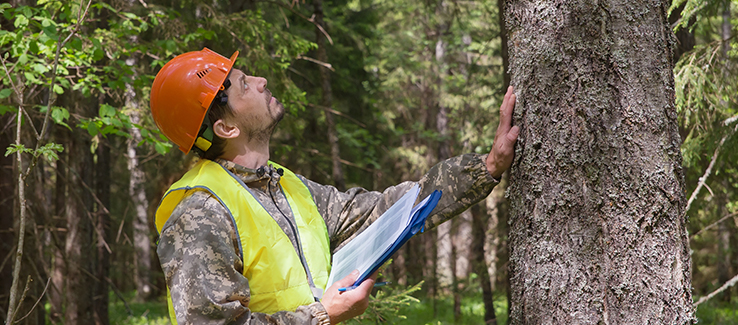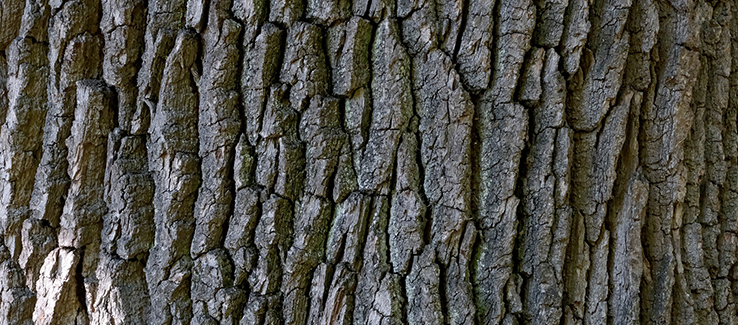
Keep diseased, infested, and dying trees from causing catastrophic damage when they fall. Understanding how to maintain your trees as they mature and age will help keep them healthy and thriving for generations.
fasttreeremovalatlanta.com gathered the following information and tips to help you establish an annual tree inspection and maintenance routine that prevents disease and infestation from irreversibly crippling your Atlanta, Georgia, trees.
Routine Tree Maintenance
The following tree maintenance schedule will help support your tree’s health and vigorous growth while preparing it for unexpected severe weather events.
October through early March – This period represents late fall through early spring (typical dormancy period) and is a prime time to execute maintenance activities like the following:
- Plant or transplant trees
- Mulch with a 3-inch layer of organic material
- Irrigate weekly (if less than 1-inch of rainfall)
- Roots continue to grow (unless the ground freezes)
- Fertilize trees in early spring (wait for leaf out for foliar fertilization)
- Prune your tree(s) for shape or to remove dead wood (pruning encourages new growth)
Tip: When larger branches need removal, hire a professional tree service to prevent severe tree damage or catastrophic mishaps.
Mid-March through September – This period encompasses spring, summer, and early fall and is the best time for the following maintenance activities:
- Renew, fluff, or replace mulch
- Water weekly (if less than 1-inch of rainfall)
- Fertilize (if using a foliar application)
- Avoid lawnmower and weed whacker use near tree trunks and surface roots
- Inspect for insects (entry/exit holes and frass) and disease (mushroom and fungus growth)
- Control (pull) weeds within the tree’s drip line
- Prune damaged wood resulting from severe weather
Tip: Hire a certified arborist to thoroughly inspect your tree(s) after severe weather events (common in and around the Atlanta Metro area)
Tree Inspections

Inspect your Atlanta, Georgia, trees regularly for their health and your safety. Trees provide many benefits for homes, including shade, beauty, and improved air quality. However, if a tree is diseased, infested, or has defects that could lead to failure, your beautiful shade tree could become a deadly liability.
Tree inspections should occur during the growing season and/or dormancy. An inspection should also be conducted after severe weather events. Trees should be inspected annually for signs of trouble and (thoroughly) every three years by a certified arborist, especially when decline and dieback are ongoing issues in your trees.
Tree Branch Inspection and Maintenance
Annual tree inspections should detect the following in branches:
- Broken and dangling branches – including broken branches wedged in the canopy
- Dead branches – easy to detect during the growing season (foliage will be absent)
- Branches missing bark or growing fungus (signals dead wood)
- Cracks where branches attach to the trunk
- Narrow crotch angles where branches attach to the trunk (these are weak and prone to breaking)
Maintenance Recommendation: Prune dead wood when detected (any time of year). You should closely monitor branches you suspect are dying. Hire a certified arborist to remove large or dead branches high within the tree canopy and inspect trees with narrow crotch angles.
Tree Trunk Inspection and Maintenance

Annual inspections allow you to detect trouble in tree trunks like:
- Cracks and cavities
- Cankers
- Fungal Growth
- Oozing sap
Maintenance Recommendation: Hire a professional to thoroughly examine trees exhibiting these problems. The exterior appearance of a tree may seem fine except for a crack, cavity, or fungus, while the tree’s heartwood may be rotted, soft, or empty. A certified arborist has the tools and experience to inspect a trunk’s interior.
Tree Foliage Inspection and Maintenance
Annual spring inspections help detect problems in a tree’s foliage, including the following:
- Stunted leaf growth (smaller than usual)
- Chlorosis (yellowing)
- Abnormal or deformed growth
- Black spots (lesions)
- Wilting and premature leafdrop
Maintenance Recommendation: Prune affected branches unless the issue is detected in more than 25% of the canopy. If the problem is detected throughout the canopy, it indicates a much more significant issue, requiring immediate, professional help.
Tree Root Inspection and Maintenance

Annual inspections can uncover root problems like:
- Mushroom growth on roots, along the base of the trunk, or on soil near the tree
- Cavities, decay, and hollows in visible or anchoring roots
- Cracked or raised soil on one side of a tree trunk (indicates leaning)
- Excessive soil fill or planting garden beds that are too deep, covering the root flare
Note: There are two root types to consider, including:
Absorbing Roots – These are mostly below ground, absorbing water and nutrients from the soil. The problem typically appears as small or discolored leaves when absorbing roots are damaged.
Anchoring Roots – Large, woody roots maintain a tree’s stability. Some are visible above ground (surface roots), while some aren’t. When anchoring roots are damaged, the tree can appear healthy. However, it may lean or not. Compromised anchor roots mean even gentle wind or extra rainwater weight can topple the tree.
Maintenance Recommendation: Remove excess soil from around the tree’s root flare. When decay or mushrooms are detected, get immediate assistance from a certified arborist. Extensive issues in tree roots typically require emergency tree removal.
Tree Maintenance
In this article, you discovered essential tree maintenance information and tips to help keep them from suffering the ravages of deadly diseases and insect infestations.
Knowing how a tree maintenance routine protects your trees and property will help motivate you to schedule annual inspections, seasonal pruning, and preventive treatments boosting your tree’s defenses and keeping them healthy for generations.
Your failure to schedule annual tree inspections and maintenance can result in disease and/or insect infestations, severely compromising your tree’s health while endangering the health of your entire landscape.
Sources:
arborday.org/trees/tips/
gatrees.org/wp-content/uploads/2020/05/GATreeOwnersManualWEB.pdf
purdue.edu/fnr/extension/why-tree-inspections/
(404) 220-9965
(404) 220-9963
To view the orignal version of this post, visit: https://www.fasttreeremovalatlanta.com/annual-tree-maintenance-in-atlanta-georgia

No comments:
Post a Comment